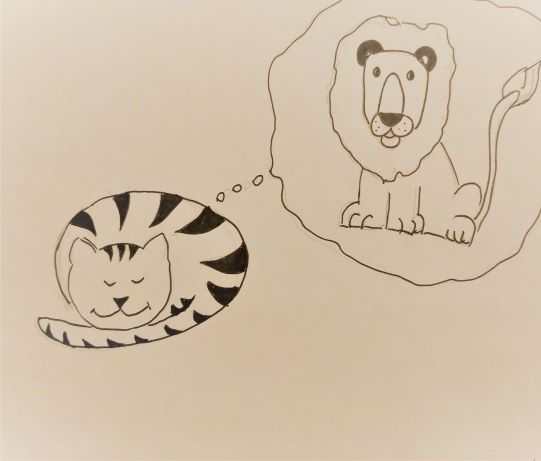
The background
There are eight students in the group with whom I trialled this lesson. They are about 12 – 14 years old and we are now finishing the A2 level. The inspiration for this very lesson (apart from my own personal obsession with storybooks and storybook illustrations) was one of the reading tasks that we did cover, taken from Prepare 3 2nd edition by Cambridge University Press in which we discussed books and everything we read in general. The thing that really inspired me to put together this lesson was one of the follow-up questions asked on page 104 and it went: Do you think that books with illustrations in them are just for the little kids? and, which came as a surprise, this was the question that generated a real discussion.
Almost at the same time, I received a delivery from a bookshop with as many as eight new storybooks and that basically was it. I wanted a new lesson, a different lesson.
If you are interested in storybook illustrations but you are not quite sure where to start, I would like to suggest watching an amazing webinar by Mathew Tobin on ‘Exploring Pictures in Picturebooks‘ as well as having a look at the PEPELT webiste and all the videos they have posted, especially as regards the peri-textual features of picturebooks.
Introduction
The teacher brings up (or brings up again, as in our case) the topic of illustrations and drawings in books in general. Students discuss in pairs or teams.
- Are the illustrations and drawings only for the little kids?
- Are the photographs only for adults?
- What do the teenagers like then?
The teacher regroups the students, to make sure that each student has a new partner. The students, now in new pairs, report what they have discussed. Afterwards, the teacher asks each pair ‘Do you have the same opinion as your partner?’, this way summarising the entire discussion so far.

Setting the context
The teacher shows selected illustrations and the titles of the storybooks to be used in class. I have used the covers but these might not always be appropriate. It might be a better idea to choose one of the illustrations from the story. The students discuss the following questions:
- What can you see in the picture (on the cover page)?
- What can the story be about?
An open class discussion follows. At this point the teacher does not reveal anything about the plot of any of the stories. The students will be able to figure it out for themselves in one of the later stages of the lesson.
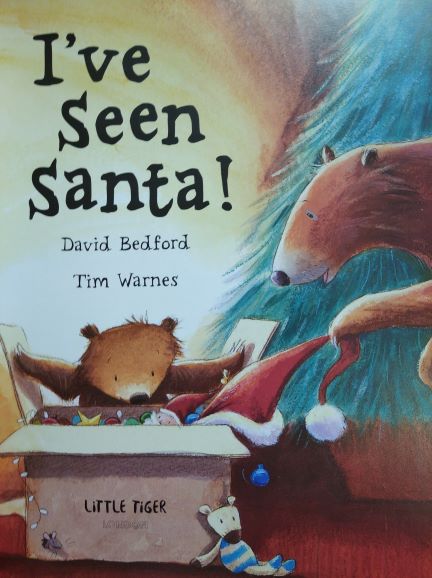
The storybooks selection
When I taught this lesson for the first time I used the following coursebooks
- I’ve seen Santa! by David Bedford and Tim Warners from Little Tiger: I have chosen this because they are cosy and warm, something that might be an example of typical, obviously beautiful storybook illustrations which are there only to accompany the text.
- Where’s my baby? by Julie Ashworth and John Clark from Longman. This book is a good example of a basic framework chosen to tell the story. All the pages are basically the same scene: Mr Monster Officer and Mrs Monster looking at yet another monster baby. The baby is the only element that is changing from page to page, as the officer’s confusion and Mrs Monster’s desperation grow.
- Mr Noisy and the Giant by Roger Hargreaves from Mr Men and Little Miss Magic. This might be a good example of simple and uncomplicated, illustrations that might have been drawn by little children.
- Perfectly Norman by Tom Percival from Bloomsbury. This is a gem of a book where the story is told through the words and by the visuals, both of these being separate entities in their own rights, complementing each other.
- A Child of Books by Oliver Jeffers and Sam Winston from Walker Books Ltd. This title is unique, like all the books by Oliver Jeffers and here a story of the importance of books is told and illustrated by pictures made of words (which are also the quotes from the classic child literature, all titles acknowledged in the inside covers).
Vocabulary
We have looked at some of the vocabulary related to storybooks that the students might need in the following stage. In a way, for my students, it was the follow-up on the vocabulary presented in the coursebook, and for that reason I decided to include the following: cover, text, illustrations, writer, illustrator, reader, character, background, details, plot, dark, bright, easy, complex, drawn, printed, painted.
The students were working in pairs, matching the definitions with the terms, follwed by a whole class feedback and an exercise in which we talked together about one of the books, using these words. For this exercise it is best to choose the title that is the biggest in size so that it could be comfortably demonstrated by the teacher and seen by the students. By discussing the storybook together, the teacher can also guide the students and ask some follow-up questions, to model what the students will be requested to do in the following stage. One or two questions from the set below can also be used.
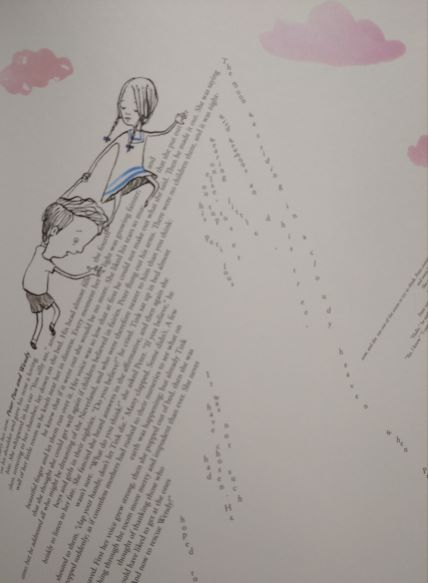
Discussion
The students work in pairs or groups of three. Each team gets one of the storybooks and a set of questions to discuss, based on what they see in the storybook. The teacher sets the time limit and when the time is up, the students exchange the storybooks and the procedure is repeated until all the teams have had a chance to look at all the books.
We worked in four teams and we used about 5 minutes per book.
The questions the students were asked to answer were as follows:
- Please describe the book using the key words.
- Look at the illustrations only. What is the story about? Can you ‘read’ the story only by looking at the illustrations? Why? Why not?
- Look at the text (some or parts). What is the story about? Do you like it?
- Do you like the illustrations? Are they simple or complex? Beautiful or ugly? Dark or bright?
- Do the illustrations make you feel happy / sad / angry / bored / ? Why?
After all the students have looked at and discussed all the storybooks, the teacher asks them to answer the following questions
- Which book has got the best illustrations? Why do you like them?
- Which book has got the worst illustrations? Why don’t you like them?
The teacher monitors and helps to keep the discussion going. A whole class discussion follows. The teacher may highlight the main points, as outlined above (the storybook selection) but, really, the main aim of this kind of a lesson and this kind of a discussion is the opportunity for the students to look and to draw their own conclusions and formulate their own opinions. There are no correct or incorrect answers and interpretations.
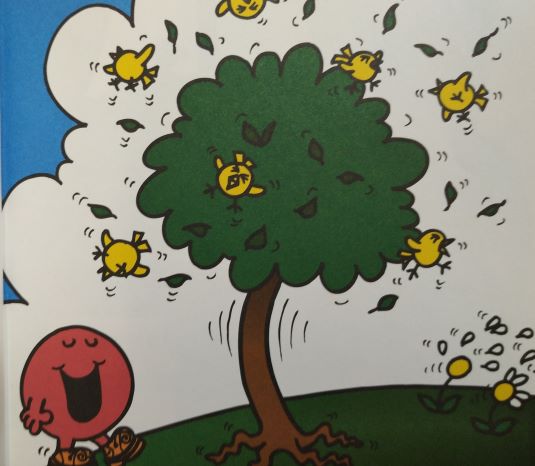
Conclusions
This was the first lesson of this kind with this particular group. It was obvious that, at the very beginning, some of the students did not feel very comfortable with expressing their views and even with formulating them. However, even as we went through the task, it all got easier, with the second or third book and they were all involved in the discussion. It was great to see how they ventured out into evaluating the illustrations and uncovering their meaning for themselves.
Their answers in the final survey on the favourite set of illustrations were also unexpected because of them could not really make up their mind and they chose two, very different books: the more conventional ‘I’ve seen Santa!’ and the more unusual ‘Perfectly Norman‘.
All in all, I did decide to give myself a pat of on the shoulder for that lesson and I am already planning the next one. Maybe it will be devoted to storybooks, maybe not.
If you, dear reader, have any storybooks lying around and no idea for a lesson, here is your lesson plan!
Bonus: an easier start
I have written the post and only then did I realise that, perhaps, not all the teachers will feel perfectly comfortable and ready to enter the world of the storybook illustrations at a full throttle, especially if they have not dealt with this approach to language teaching.
Storybook illustrations can be used on their own, as visuals, only slightly different visuals, as an alternative to photographs or YL scene illustrations. In this case, the teacher can choose any storybook illustrations, in no connection to the story itself or the entire book.
The teacher gives them out and uses them as the basis for one of the following exercises
- YLE Starters, Movers, Flyers speaking such as answering questions about pictures, talking about differences
- PET speaking picture description
- FCE or CAE speaking (compare the pictures and answer the questions)
- some of the ideas I shared in my post on using illustrations to develop speaking skills ‘All you need is…a picture’
This way the students (and the teacher) will get introduced to the storybooks illustrations and using drawings will be a lovely and an interesting alternative to the visuals that we usually encounter in our lessons or coursebooks. I promise that it will make a difference! And, on top of everything else, you will be developing your students’ visual literacy!
Happy teaching!
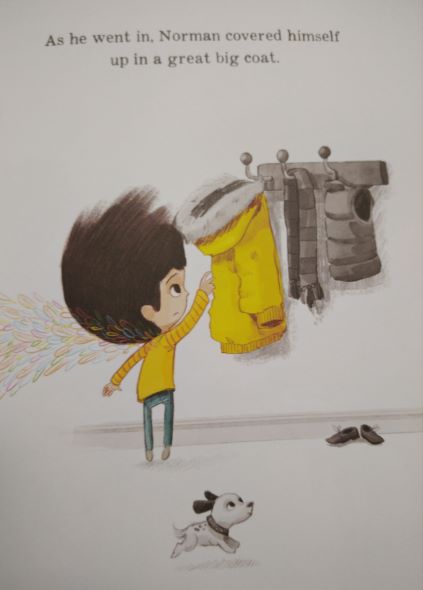

Thanks for this lovely idea for a lesson Anka. I was given the Polish translation of A Child of Books as my Secret Santa present in 2019, and I love it 🙂 It’s so beautiful, and the illustrations are incredibly clever. I’ve also been given Krtek books and Red Riding Hood as a board book in Czech – storybooks are definitely not just for children!
Hope I get the chance to use this lesson one day (I’m teaching complete beginners fully on Zoom this year, so might be a while!)
Sandy
After checking out a handful of the blog posts on your blog, I seriously like your way of
writing a blog. I added it to my bookmark
webpage list and will be checking back soon. Take a look
at my web site as well and let me know your opinion.